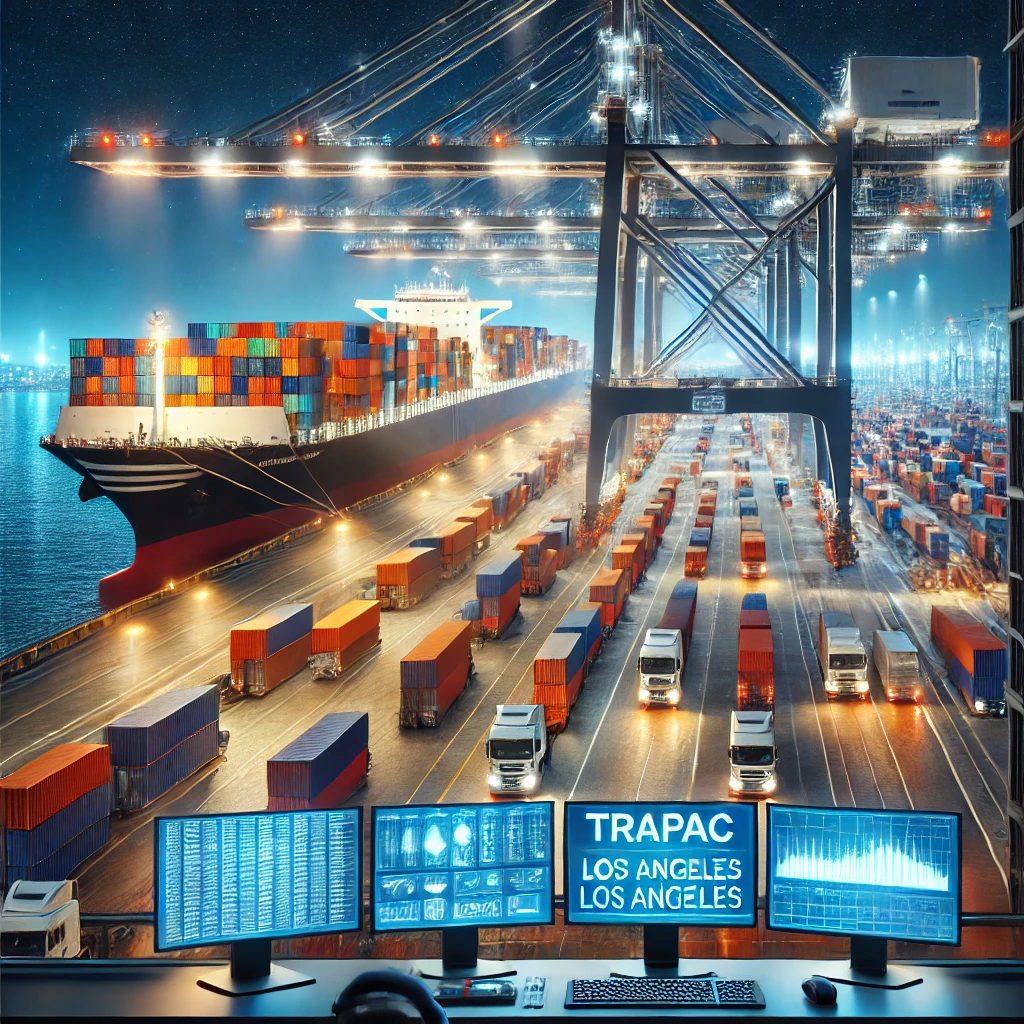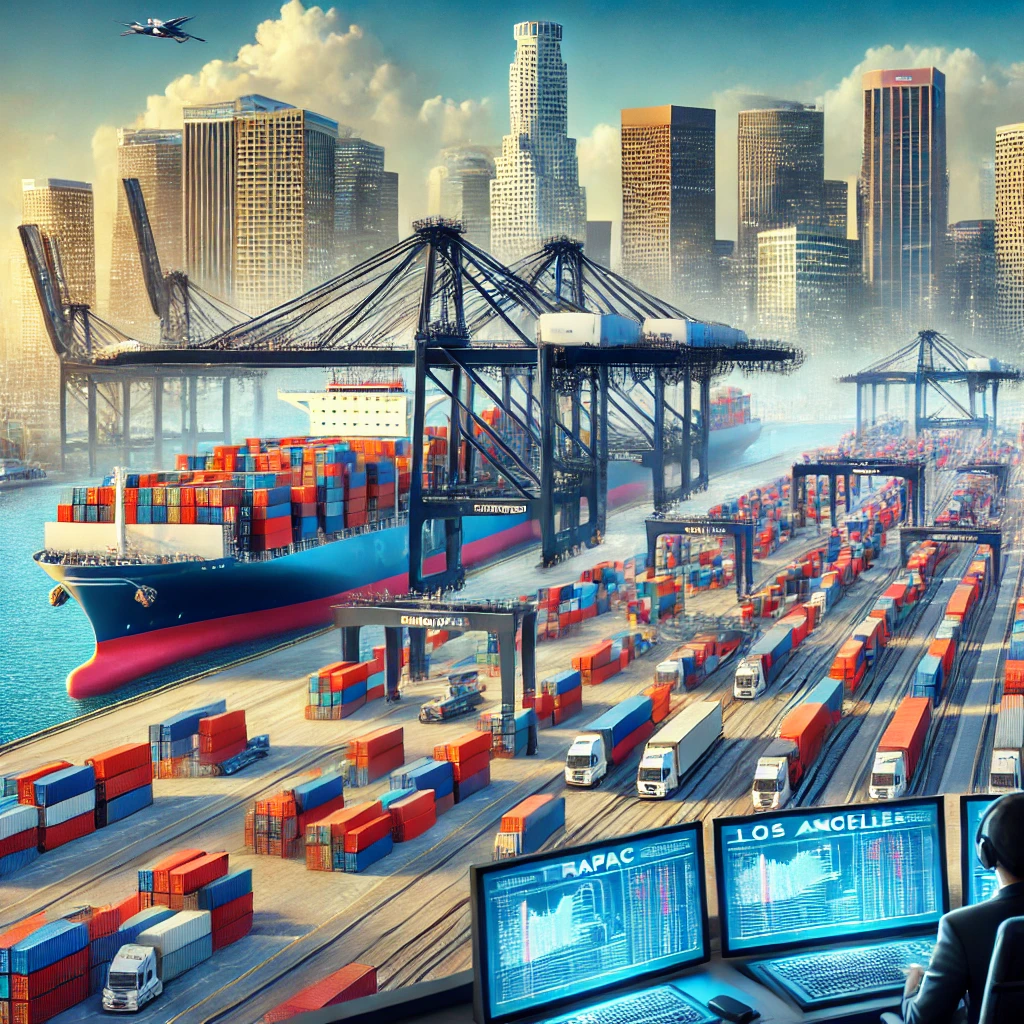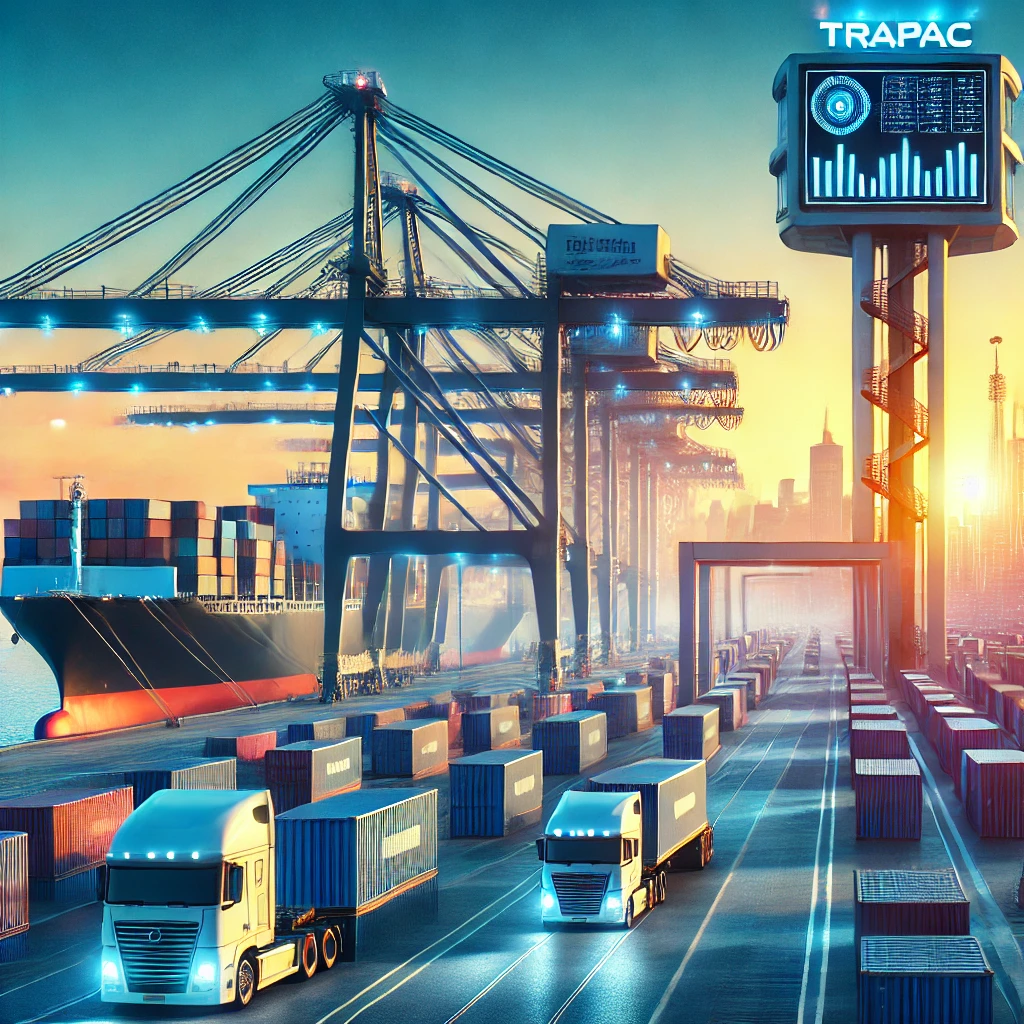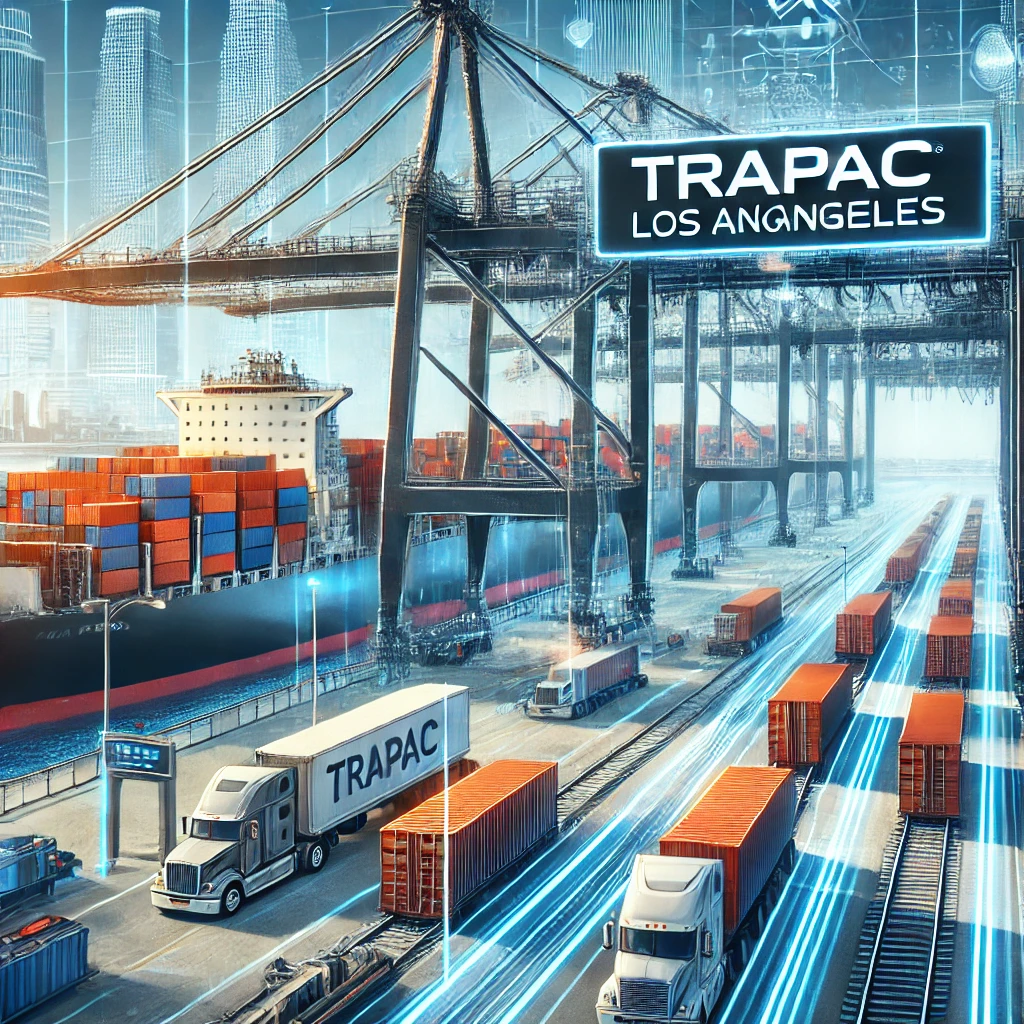What Is TraPac Los Angeles and Why Does It Matter?

Understanding TraPac Los Angeles
TraPac is a state-of-the-art container terminal known for its cutting-edge automation and efficiency in cargo handling. Established to enhance operational capacity and minimize turnaround times, the terminal is a vital component of the U.S. import/export system, serving major shipping lines and logistics operators.
Key Features of TraPac Los Angeles
- Fully Automated Terminal: One of the first in the U.S. to implement automated cargo handling and stacking.
- Strategic Location: Situated in the Port of Los Angeles, a primary gateway for trans-Pacific trade.
- High Cargo Throughput: Handles a significant portion of U.S. West Coast shipping traffic.
- Advanced Digital Systems: Integrates real-time tracking and monitoring for shipments.
- Eco-Friendly Operations: Uses hybrid-electric equipment to reduce emissions and improve sustainability.

How TraPac Los Angeles Enhances Supply Chain Efficiency
1. Automated Terminal Operations
TraPac employs robotic cranes and automated guided vehicles (AGVs) to streamline cargo movement, improving speed and reducing reliance on manual labor. This results in: ✅ Faster turnaround times for vessels.
✅ Increased safety and precision in cargo handling.
✅ Lower operational costs for shipping lines.
2. Real-Time Shipment Tracking
Shippers and logistics providers benefit from real-time tracking and digital monitoring, ensuring accurate shipment visibility from port to final destination.
3. Sustainable and Eco-Friendly Initiatives
TraPac is committed to reducing its carbon footprint by integrating:
- Hybrid-electric automated equipment to lower emissions.
- Shore power connections to allow ships to plug into the grid instead of using fuel.
- Innovative energy-efficient practices that comply with environmental regulations.
4. Enhanced Terminal Capacity for Trade Growth
With state-of-the-art infrastructure and scalable logistics solutions, TraPac Los Angeles is positioned to support growing global trade demands, making it a key terminal for major shipping lines and global freight networks.

Practical Uses of TraPac Los Angeles for Businesses
1. Streamlined Import and Export Operations
📦 Businesses engaged in international shipping can optimize supply chain efficiency by leveraging TraPac’s automated handling and quick customs clearance processes.
2. Faster Turnaround for Shipping Lines
🚢 Shipping companies benefit from TraPac’s high-tech automated systems, ensuring reduced port congestion and faster loading/unloading times.
3. Real-Time Cargo Monitoring for Freight Forwarders
📊 Logistics providers can track cargo movements with advanced digital dashboards, reducing the risk of delays and improving shipment planning.
4. Compliance with Green Logistics Initiatives
🌱 Companies focused on sustainable logistics can align with TraPac’s eco-friendly policies and emission-reducing technologies.
Challenges and Considerations at TraPac Los Angeles
While TraPac offers significant benefits, businesses should consider:
- Port Congestion Risks: High traffic volumes at the Port of Los Angeles can lead to periodic delays.
- Regulatory Compliance: Adhering to port regulations and customs requirements is essential for smooth operations.
- Cost Considerations: Automated terminals may have different fee structures compared to traditional ports.

Frequently Asked Questions (FAQs)
Q1: What makes TraPac Los Angeles different from other terminals?
📌 Answer: TraPac is one of the first fully automated container terminals in the U.S., providing faster and more efficient cargo handling through advanced robotics and digital tracking.
Q2: How does TraPac contribute to sustainability?
📌 Answer: TraPac reduces emissions through hybrid-electric cargo handling equipment, shore power connections, and energy-efficient port operations.
Q3: Can businesses track their shipments at TraPac?
📌 Answer: Yes, TraPac offers real-time digital tracking and monitoring systems, allowing businesses to track their containers and plan logistics effectively.
Q4: What types of cargo does TraPac handle?
📌 Answer: TraPac primarily handles containerized cargo, including consumer goods, electronics, industrial supplies, and retail shipments.
Q5: Is TraPac Los Angeles suitable for small businesses?
📌 Answer: Yes, small businesses involved in import/export activities can leverage TraPac’s efficient logistics infrastructure and real-time cargo tracking to streamline supply chain operations.
Conclusion
TraPac Los Angeles plays a crucial role in global trade, offering automated container handling, real-time shipment tracking, and eco-friendly logistics solutions. For businesses, freight forwarders, and shipping companies, TraPac provides a modern, efficient, and sustainable platform for international trade.
Understanding how TraPac operates and how it benefits supply chain logistics enables businesses to optimize their shipping processes, reduce costs, and enhance global trade efficiency.
